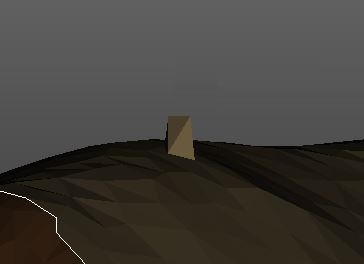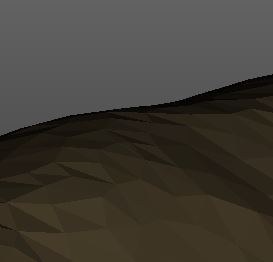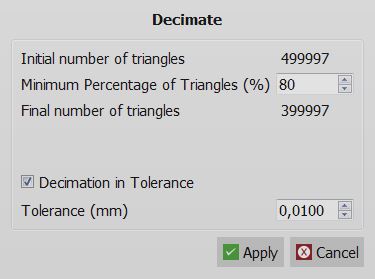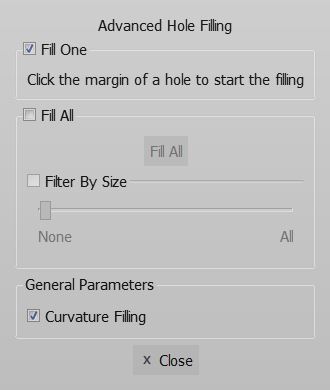Difference between revisions of "Man MeshEditing"
(Marked this version for translation) |
|||
| Line 5: | Line 5: | ||
<!--T:2--> | <!--T:2--> | ||
| − | When | + | When generating a mesh starting from data acquired by a scanner the meshes may not be perfect for your need. |
<!--T:39--> | <!--T:39--> | ||
Revision as of 13:59, 21 August 2015
Contents
Mesh Editing
When generating a mesh starting from data acquired by a scanner the meshes may not be perfect for your need.
The generated mesh may have artifacts, noise or holes that need to be fixed.
OpticalRevEng Dental already apply a different mesh generation strategy specific for the element you're working with, trying to fix all the problems automatically, but you may need to further edit the meshes before exporting them to another software.
In this page you can read about the Mesh Editing tools provided tha can be found in the Mesh Menu and Mesh Toolbar.
Remove Spikes
A spike in a mesh is a when you have a tiny part of the surface that in reality is not part of the 3D object Acquired by the scanner.
Theese spikes are normally automatically corrected by the software during the mesh generation, but if you import meshes from other system you may find them.
This tools automatically removes all the spike it found and repair the mesh.
Mesh Sharpening
The sharpening tools do two things at the same time. It smooth the part of the surface that are more planar and it sharpen the edges. It takes 2 parameters:
- T [°] : This angle identify what is an edge, all the parts of the surface that create an angle less than T° will be sharpened. If you put this a 0 you're smoothing all the surface
- Normal Iterations : How many times the software will pass over the surface to do the sharpening. Bigger values means more smmoting and more sharpening
This tool is used automatically by the software for you with specific parameters. Use of this software with the wrong parameters may modify the shape and dimension of the objects.
Mesh Smooth
This tool is similar to the Mesh Sharpening tools but apply a smoothing to all the surface without preserving the edges.
This tool is used automatically by the software for you with specific parameters. Use of this software with the wrong parameters may modify the shape and dimension of the objects.
Mesh Decimate
This tool will try to reduce the number of triangle in a mesh, to save more space, trying to save the most details possible.
On the top you can see the current number of triangles of the selected meshes.
You can input a percentage of triangle that you want to keep (For example 50% if you want to halve the mesh size).
Then you can put a tolerance. If the tolerance is enabled the software will stop the decimation if this will modify the mesh more than the tolerance parameter.
Then you just need to click Apply to see the result.
Mesh Defeature
This tool take a selection of the mesh and it removes all the details, leaving the simpliest surface possible. It remove holes, spikes, noise. You just need to:
- Select the area where you want to remove all the Features with the Selection Tools
- Apply the Mesh Defeature
Make Manifold
This tool take a mesh and search and remove the parts of the surface that are not Manifold as this definition
Mesh Catenate
This tool can be used only in Free Mode. It takes all the mesh selected and create a single mesh merging all of the selected meshes togheter.
Flip Normals
Every mesh has an inside and an outside. You can identify them because the software paint the inside with a different color. This tool flip the inside and the outside of the selected meshes.
Detect Intersections
Sometimes is possible that part of the surface of a mesh intersect with the mesh itself, something that in reality is not possibile. This tool identify this situations and fix them
Fill All Holes
This is an interactive tool that let you fill holes in the currently selected mesh.
This tool can work in 2 different ways
Fill One
In the fill one mode the software will highlight the hole near the mouse cursor, and if you click with the left mouse button on the highlighted hole the sofware will close it.
Fill All
In the fill all modes the software will try to close all the hodes. With the Filter By Size function you can select all the holes below one size and close only them. The selected holes will be highlighted in real time by the sofware.
Curvature Filling
There is an additional option, curvature filling. If this option is enabled the software will try to follow the curvature of the rest of the surface closing the hole. If it's disabled the software will ignore the rest of the surface and close the hole with a straight plane.
Close Denturse
When you scan an entire jaw you'll have a big hole at the base. This tool is made to close only that hole. Closing that hole with the Fill All Holes tool take a lot of time and the final result is not good enough.
With the close denturse tool the mesh will be closed with a perfect plane and is really fast.
This tool will not work if the mesh has other holes or artifacts.
Mesh Cleaning
This tool take a mesh and try to remove all the possible artifacts and problems.
Mesh Offset
This tool create a bigger/smaller version of the selected mesh. You can select how to change the mesh with the Offset [mm] parameter.
The three flags (Remesh, Sharpen and Optimize Vertices) has to remain checked.
Normally none of this tool is needed to work because the strategies alread apply a selected sequence of this tool specific for every element.
Next
You can now return to the Main Page or continue to the Implant Align page.



